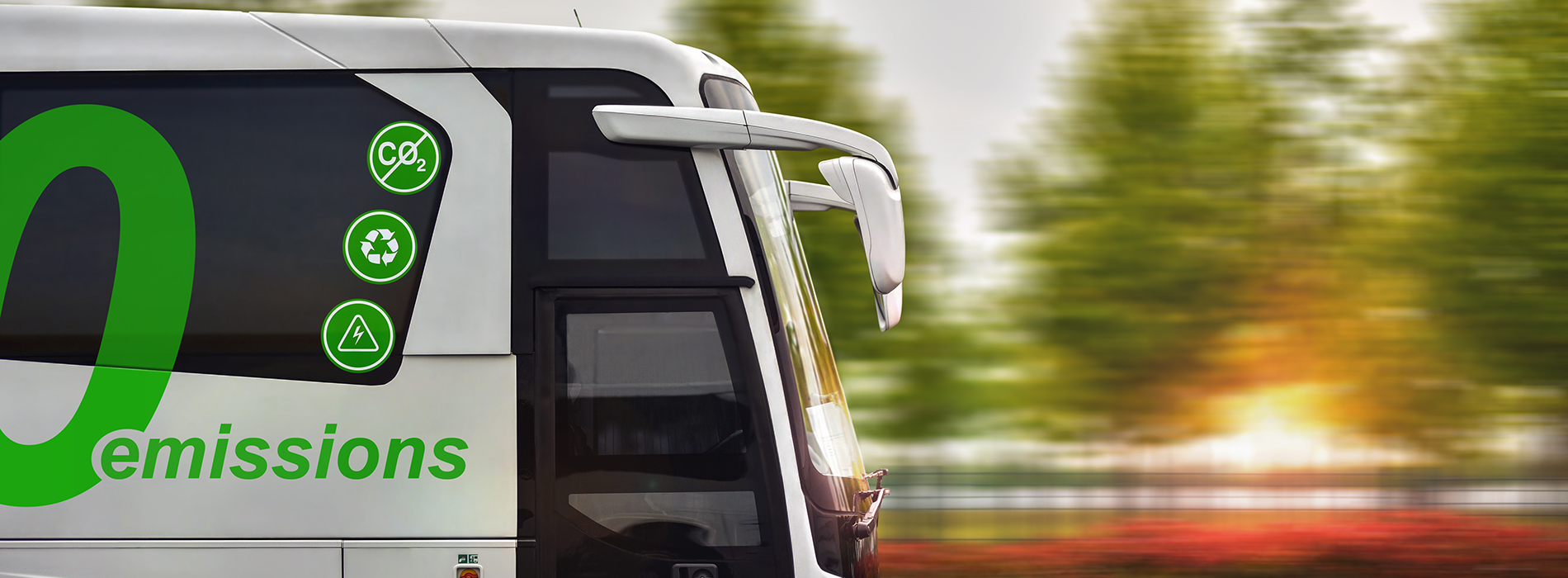Leading by Example: Fleet Electrification

As states grapple with how to swiftly transition to electric vehicles (EV) to reach their clean transportation goals, it’s critical for them to consider the levers that most efficiently move the needle.
We know from running EV incentive programs in five states that EV market growth produces a positive feedback loop, generating additional market benefits and reinforcing them. In other words: volume has value. Once an EV is out on the road, it’s producing familiarity among other potential buyers and driving demand for charging infrastructure, which helps dispel fears of other consumers.
One way we can spark this cycle is to convert fleets. With fleets investing in dozens or more EVs on the road at a time, their volume delivers the momentum needed to drive greater demand and produce larger adoption across the board.
The business case for fleet electrification is getting stronger as EV technology advancements reduce acquisition costs, more EV charging infrastructure is built and fleet operators look for innovative ways to meet environmental challenges.
From a policy perspective, state and municipal vehicles constitute an effective market segment to address through fleet vehicle procurement mandates, increased fuel economy standards and performance-based goals. Implementing policies and practices that accelerate fleet electrification and facilitate the growth of charging infrastructure will no doubt broaden the overall EV market.
Fleet Procurement Goals and Mandates
An important early step for transitioning fleet vehicles to EVs is establishing goals and incremental milestones. For example, California Governor Jerry Brown’s Executive Order B-16-2012 specified that 10% of fleet light-duty vehicle purchases be zero-emission vehicles (ZEVs) by 2015, and at least 25% of purchases be ZEVs by 2020. California’s AB 739 (Chau, 2017) established similar goals for state fleet ZEV purchases in the medium- and heavy-duty (MD/HD) weight classes. In Washington, a state initiative directs that at least 50% of all new state-owned passenger vehicle purchases be electric vehicles by 2020.
In addition to setting EV procurement goals, states and municipalities should also consider performance-based goals to ensure EVs are purchased and utilized to achieve the highest greenhouse gas (GHG) emission reductions. For example, Section 3620.1 of the California State Administrative Manual establishes a minimum fuel economy standard for passenger vehicles (at 38 miles per gallon) as well as light-duty trucks, vans and SUVs (at 22.2 miles per gallon).[1] Incorporating policy objectives into agency directives is an effective strategy, since it is not predicated on legislative or regulatory changes and can therefore be implemented relatively easily.
With regards to MD/HD vehicles, one model policy is the Innovative Clean Transit Regulation approved by the California Air Resources Board (CARB) in 2019. This regulation requires operators of public bus fleets to transition completely to zero-emission buses by 2040, and requires that starting in 2029, 100% of new bus purchases be zero-emission buses. CARB is also currently developing a Clean Truck Rule, [2] which would require truck manufacturers to sell an increasing percentage of zero-emission trucks over the next several years. In addition to reducing emissions of GHGs and nitrogen oxides, these regulations will also stimulate the growth of the manufacturing sector for zero-emission trucks and buses and will generate ancillary economic development opportunities in this sector.
Charging Infrastructure and Distributed Energy Resources
As with any effective EV deployment strategy, public fleet electrification must be accompanied by thoughtful and strategic EV infrastructure (EVI) planning. Public fleets represent a significant opportunity for states and municipalities to showcase new vehicle technologies and demonstrate the business case for owning and operating these vehicles, as well as the corresponding charging infrastructure.
MD/HD vehicles are especially significant sources of GHG emissions and criteria air, but face charging infrastructure challenges due to the larger battery capacity of these vehicles and the corresponding need for significant amounts of electricity. As a result, increased deployment of electric MD/HD fleets will also require upgrades to the existing distribution grid infrastructure.
For example, the New York Truck-Voucher Incentive Program (NYTVIP), administered by CSE, offers voucher incentives that reduce the cost of alternative fuel trucks and buses at the point of purchase, making these vehicles cost-competitive with conventional fossil-fuel powered equivalents. Similarly, California’s Hybrid and Zero-Emission Truck and Bus Voucher Incentive Project (HVIP) is an analogous program, which until 2020, also offered funding for charging infrastructure for MD/HD vehicles. To satisfy this unmet demand for MD/HD charging infrastructure, the California Energy Commission in 2020 announced the development of a new block grant incentive program to distribute incentives for MD/HD chargers. While programs like NYTVIP and HVIP have demonstrated successful incentive uptake for the vehicles themselves, additional incentive funding dedicated to MD/HD vehicle charging infrastructure is necessary to ensure the widespread electrification of this sector.
MD/HD fleets also provide a good opportunity to highlight and test new technologies, such as the adoption of vehicle-grid integration functionalities and the utilization of distributed energy resources (DER), such as solar and energy storage, as power sources for charging MD/HD vehicles. San Diego Gas & Electric is currently conducting a pilot program to electrify school buses, connect these buses to the grid and identify the potential to manage charging in response to different grid demand scenarios. These types of programs will be valuable in advancing new technologies that can then be adopted by other public and private stakeholders.
It makes good business sense to adopt fleet electrification. In the long term, it can ensure compliance with forthcoming regulatory requirements, and in the short term, it offers the possibility of lower operational, maintenance and fueling costs. Further, considerable tax credits, grants and other financial incentives are available to companies that convert to zero-emissions fleet vehicles.
Example Use-Case for EV Charging with Distributed Energy Resources: School Buses
As states and municipalities explore the integration of distributed energy resources (DERs) and EV charging strategies, school buses are an effective use‐case given their short and standardized travel patterns. Moreover, school buses are not frequently used during the summer months and can therefore take greater advantage of DERs and the high proliferation of renewables on the grid during this period.
In addition, the reliability and resiliency benefits that managed charging strategies that incorporate DERs can offer are particularly useful for schools, which often serve as community centers or emergency shelters and are a prime use‐case for DERs. While school bus charging does not generally occur at the school facilities they serve, there are still opportunities to integrate school bus charging with the deployment of DERs that are already used for resiliency purposes.
[1] Department of General Services (DGS). California State Administrative Manual Section 3620.1. Revised June 2016. Available at https://www.dgsapps.dgs.ca.gov/documents/sam/SamPrint/new/sam_master/sam_master_File/chap3600/3620.1.pdf
[2] California Air Resources Board (CARB). Advanced Clean Trucks Fact Sheet. July 2, 2019. Available at:
https://ww2.arb.ca.gov/resources/fact-sheets/advanced-clean-trucks-fact-sheet


